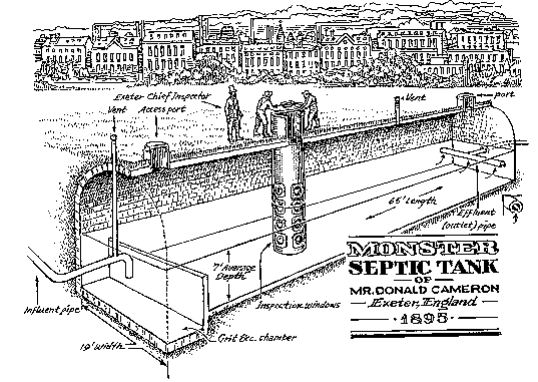Edward Frankland set up filtration experiments in the laboratory, using glass cylinders six feet high and about ten inches in diameter, open at the top and bottom and placed over; earthenware troughs. A glass tube was inserted in the middle for aeration purposes. Five different filter media were used: coarse gravel, sand, soil, loamy marl and peaty soil. The filters were dosed morning and evening with crude London sewage applied at different rates. After four months of successful purification, Frankland laid down the well-known principle of “intermittent filtration” mentioned in the introduction. So favorably were the members of the Royal Commission impressed with the results, that they recommended intermittent land filtration as a satisfactory method for the treatment of sewage.
After a series of thirty-eight unsuccessful experiments by English towns on this method of land filtration, it seemed probable that Frankland’s observations were soon to be forgotten. It was not recognized at that time that the failures recorded were due to the use of unsuitable land, overloading, or inadequate resting and aeration.
Reference:
- Buswell, A. M. The Depth Of Sewage Filters And The Degree Of Purification. L. : Division Of The State Water Survey. Zv. 26.
Photo: https://www.app4water.com/media/wysiwyg/Septic_Tank.JPG

